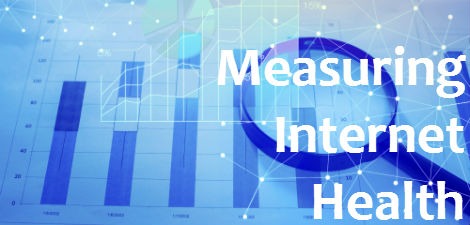We are interested in undertaking and supporting activities that help maintain a healthy Internet. To that end, we are pleased to announce a new partnership. The Internet Society is working with Thinking Cat Enterprises on the Techark Network Operator Measurement Activity (NOMA) project to unlock more operator-based measurements that tell us something about the health of the Internet. The first target of NOMA is to develop an access network’s perspective on IPv6 performance as one indicator of the Internet’s health.
An unexpected benefit of World IPv6 Launch in 2012 has been an ongoing look into the state of IPv6 deployment in access networks around the globe, as measured by participating websites. One of the guiding principles was that those making a public commitment to IPv6 deployment had to deliver, and it had to be publicly verified. We established a dashboard that indicated whether or not the website was delivering IPv6 on its homepage. Those websites in turn measured the extent to which the access networks were delivering IPv6.
Once the websites had the ability to assess the amount of IPv6 traffic they were seeing, they agreed that they would continue doing this over time. So, once a month since World IPv6 Launch, we have published a set of measurements of the networks that have registered themselves in our database. This is an important reference for people around the globe interested in the state of IPv6 deployment. (You can see those measurements here, and thanks very much to Google, Facebook, Yahoo!, Akamai, and LinkedIn for continuing to contribute to those measurements each month).
These measurements are not without limitations. Each of the measurers has a different view of the Internet based on geography and the demographics of their user populations. Each of the measurers has a slightly different way of measuring IPv6 traffic (you can see the details of what they report). Yet they are broadly in agreement that this is a good rough estimate of what IPv6 traffic looks like on the Internet.
A bigger limitation is that they are from the point of view of websites. They see roughly how much traffic comes from any particular access network; this tends to show what percentage of each network is enabled with IPv6. If one were to look at IPv6 traffic from the access network’s point of view, the amount of IPv6 traffic might look quite different. That’s because traffic gets concentrated on a few very popular websites that tend to transfer a lot of bits. So for an individual user who has IPv6 enabled in an access network, the percentage of traffic that uses IPv6 may be quite high because of IPv6-enabled video consumption (YouTube, Netflix, Facebook, etc.).
Websites are often reluctant to reveal data due to concerns about business and privacy issues. When the websites agreed to reveal this through a neutral third party (the Internet Society), we were able to get a collective view of what is going on with IPv6. The websites reveal the raw data to us, we combine it to produce a collective view, and then make it available to the public.
NOMA aims to do the same thing, but from an operator’s point of view. Collecting a set of views from various network operators starts to tell us something about what is going on in the Internet with a perspective that is otherwise hard to achieve. NOMA aims to find a way to unlock those views and produce measurements that are:
1. Operator-based. Operators are in unique position with respect to knowledge about what is going on in their networks. Deriving measurements from operators is key to having a real view on what is happening in the Internet as a whole.
2. Bottom-up. Because it is operator-based, it is necessarily bottom-up. Operators use the data they have to help them operate their networks better, so the data always starts with identifying what they need to know about how their networks operate.
3. Collaborative. Operators of all sorts of networks – websites, enterprises, or consumer ISPs – have legitimate concerns about revealing this kind of information, but doing something collaboratively can help both alleviate concerns about acting alone, and create a cooperative environment for revealing what is important to help individual networks operate better.
The Internet Society is interested in the availability of data about the state of the health of the Internet. In 2012, we published the Internet Invariants describing some key, unchanging characteristics that make the Internet what it is. We asserted there that the Internet is accessible and measurable. NOMA will highlight the reality of that by unlocking data that operators have about the operations of their own networks to build up a collective view of the Internet’s health. We also asserted that collaboration is needed not only between devices but also between the people who operate these networks. This project intends to demonstrate that collaboration in the same way that the World IPv6 Launch website participants demonstrated sharing data to make the Internet better – by getting operators together to produce data for IPv6-related measurements it helped to create a self-sustaining community of operators working together to address shared deployment challenges.
I hope you will visit the new web page about NOMA and follow along here on the Internet Technology Matters blog as we get this effort underway.
